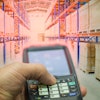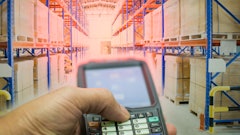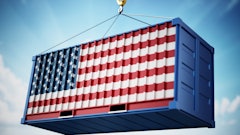
The transportation industry depends upon shippers’ need to transport products and components from one geographical location to another. Can 3D printing technologies eliminate much of that need?
3D printing technology is rapidly evolving and the advancement of this field could present a radical challenge to the transportation industry over the next 20 years. e-Commerce shipping volume may suffer as sellers recognize the capability to transfer their product designs electronically for 3D printing at a location near the consumer. To mitigate the risk of losing shipping business to electronic transfer of 3D printing blueprints, industry leaders need to incorporate 3D printing into their strategic thinking. They need to partner with both shippers and 3D printing service providers to optimize 3D printing use and logistics, and it is not unreasonable for these transportation companies to offer 3D printing services at selected customer-facing locations.
Any decision to do so should occur only after careful examination of the lessons learned from the FedEx acquisition of ZapMail during the emergence of document faxing: FedEx decided that the best way to address the threat of facsimile transmission was to offer fax as a service. However, due to competitive pricing and the availability of household fax machines, this acquisition cost FedEx over $350 million. UPS is beginning to implement 3D printing capabilities in roughly 50 select store locations around the United States. Is it making the same mistakes that FedEx made in the past or is it positioning itself to succeed in the future market place?
In addition to its direct influences, 3D printing will have an indirect impact on the transportation industry because of its direct impact on the global distribution networks of select manufacturing industries.
Major industries that have low-volume (slow-moving), high-cost items/parts—which require quality, innovation and customization, such as the automotive, aerospace and medical device industries—can inherit the benefits of 3D printing.
To understand what 3D printing could do to the global distribution network that supports manufacturing today, consider a case study in a retail setting. A customer is driving his 1962 Corvette through town when the engine starts huffing and puffing, and eventually stalls out. He makes his way to the nearest auto part store, and provides the details of the story and make and model to the store clerk. Much to the chagrin of the customer, the clerk is unable to help the customer as it is challenging for the business to keep millions of stock-keeping units (SKUs) ranging from fast- to select slow-moving items, such as the crankshaft part required to fix the customer’s Corvette. By implementing the use of 3D printers, the business would be able to satisfy the customer’s need while removing supply chain complexity.
3D printing can allow businesses to be more innovative, and deliver higher quality items and goods, and the production of Jim Kor’s Urbee 2, the world’s first 3D-printed plastic car, illustrates this. An exceptionally lightweight, fuel-efficient, aerodynamic automobile with the resilience and safety of a racecar, the Urbee 2 consists of 50 printed plastic parts, a motor, chassis and safety cage. (An average car has over 1,800 separate parts/components.)
While slow-moving, highly customizable products may see a true benefit from 3D printing, there is an argument to be made that consumer products (toothbrushes, toys, etc.) may not be affected in such a radical way. From an inventory perspective, consumer products do not present the same challenge as highly customizable products, such as components in our 1962 Corvette engine. In other words, the manufacturing industry reached such a mature state that, from a production perspective, keeping large amounts of inventory is not as prohibitive to the company’s bottom line as it is with more specialized parts or goods.
Industrial products, such as steel beams, construction tubes, etc., on the other hand, could benefit from 3D printing depending on how the market and consumers react to 3D printed goods. Since the cost to manufacture 3D-printed industrial products is unlikely to become cheaper than normal manufacturing in the near future, the selling point for industrial products is mainly that of quality and customization. As a consumer, would you be willing to pay $1 extra for a toothbrush just because it was 3D printed?
Significant advances in 3D printing technologies and adoption must occur before the 3D printing production model employed by Kor and others can become cost-effective, move into the mainstream, and present a threat to the current long-term strategies of global manufacturing and distribution companies.



















